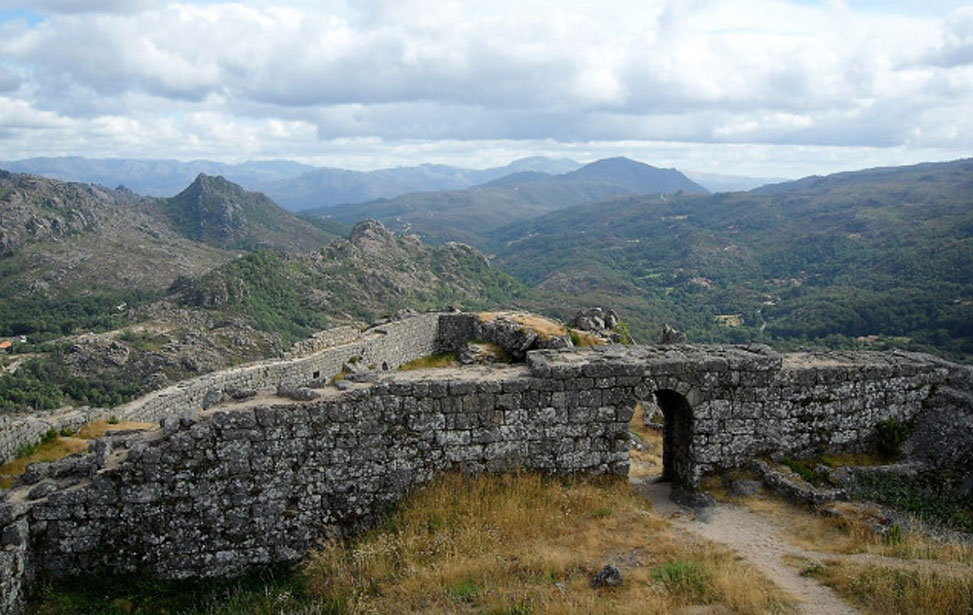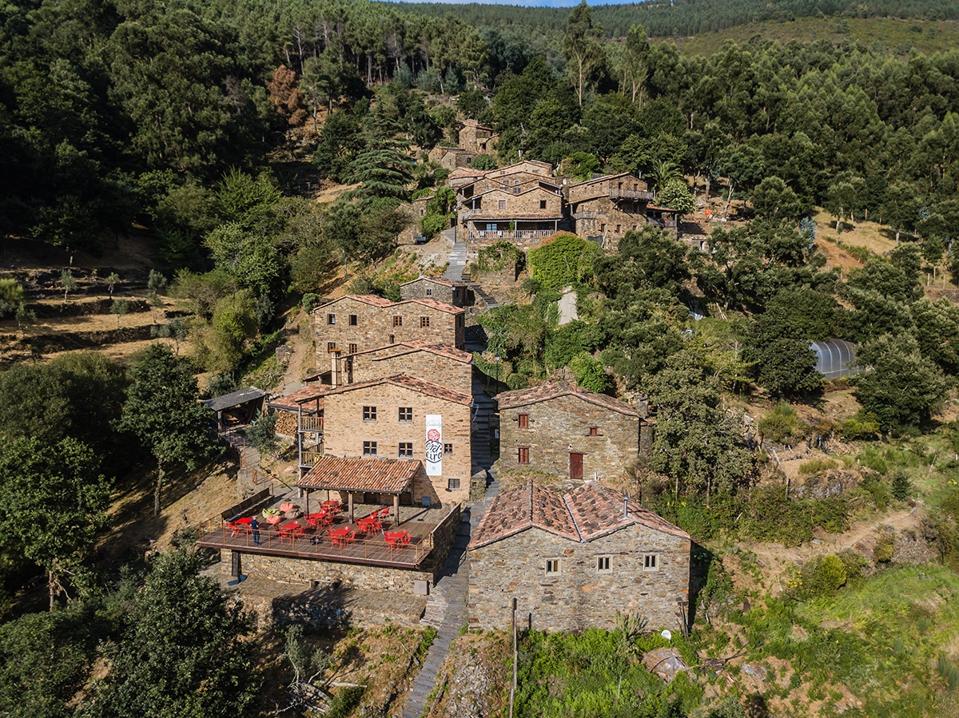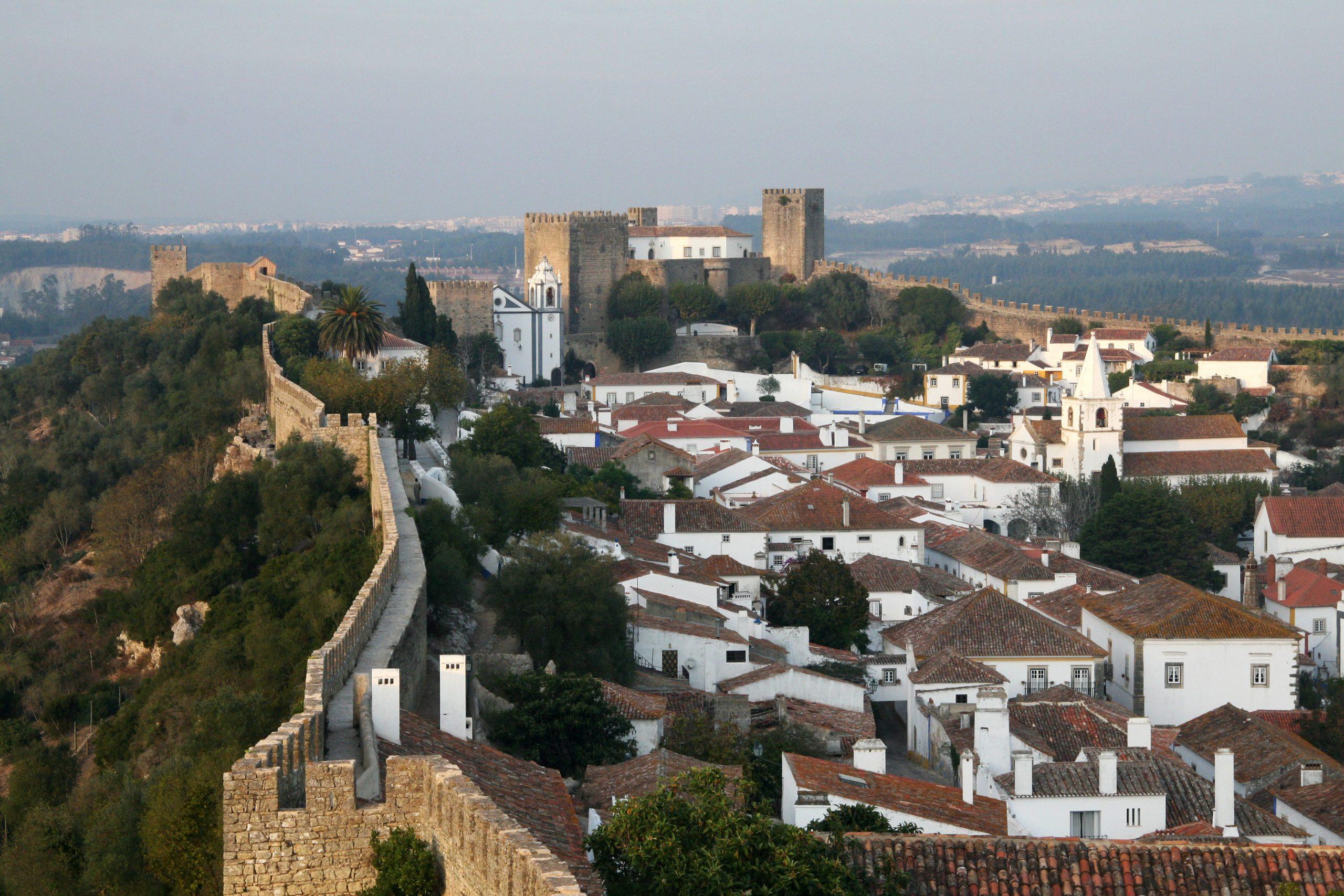Hidden Corners That Remain Untouched
Portugal’s postcard scenes—Lisbon’s mosaic tiles, Porto’s riverside shimmer, and the sun-drenched Algarve—deserve their fame. But there’s another Portugal, silent and slow, where cell signals fade, clocks seem to pause, and visitors become part of the landscape. For travelers drawn to hushed paths and local secrets, these are the places that still whisper rather than shout.
Aldeia da Mata Pequena – Where Time Stands Still
Just 30 minutes from Lisbon, nestled in the rolling limestone hills of Mafra, Aldeia da Mata Pequena is more than a Portuguese village—it’s a lovingly restored portal to rural life of centuries past. This hamlet has been meticulously rebuilt, each stone cottage featuring signature whitewashed walls and rustic red roofs, preserving the authenticity of the region’s bygone days.
What Makes It Special
-
Atmosphere: The village is free of tourist trappings—no souvenir shops, no busy cafés. The soundtrack is birdsong, the crowing of roosters, and the distant bray of donkeys.
-
Authentic Stays: Stay in one of the dozen or so rural stone cottages, most with kitchenettes and private terraces. Each morning, guests are treated to local breakfast staples like fresh farm eggs.
-
Life at a Slower Pace: Enjoy misty mornings, slow walks, relaxed afternoons on a terrace, and evenings listening for cicadas.
What to Experience
-
Walking Trails: The area offers trails through olive groves and natural landscapes, perfect for immersing yourself in the rhythm of rural life.
-
The Village Adega (Wine Cellar): Sample traditional local wines and enjoy the rustic ambiance characteristic of Portugal’s countryside heritage.
-
Tapada Nacional de Mafra: Just a short drive away, explore a royal hunting reserve now open to the public with hiking and biking trails, wildlife, and family-friendly activities.
-
Wine Experiences: Visit the nearby Manzwine winery for tastings and vineyard tours—a chance to explore the region’s wine culture.
Nearby Treasures
| Attraction | Distance/Location | Highlights |
|---|---|---|
| Tapada Nacional de Mafra | Mafra | Wildlife, hiking, biking, family picnics |
| Mafra National Palace | Mafra | Majestic baroque palace, monastery, library |
| Local Olive Groves | Surrounding the village | Serene walking, regional agriculture |
| Manzwine | Cheleiros, short drive away | Winery tours, tastings, local varietals |
Good to Know
-
Accessibility: Many nearby attractions are wheelchair accessible, and free parking is available at most sites.
-
Suitability: Ideal for couples, families, and anyone seeking a quiet rural retreat.
-
Season: The village is atmospheric year-round, with foggy mornings in winter and cicada serenades in summer.
Aldeia da Mata Pequena offers an escape to a Portugal that remains intimate, untouched, and deeply rooted in tradition—where the passing of time feels gentle and life moves to a slower rhythm.

Fraga da Pena – The Forest’s Secret Waterfall
Hidden in the lush heart of the Serra do Açor, near the peaceful schist village of Benfeita, Fraga da Pena is a waterfall straight out of a fantasy. Here, crystal-clear mountain water plunges 19–20 meters down a dramatic schist cliff, forming a series of natural pools shaded by ancient chestnuts, oaks, and lush ferns. The scent of moss, wildflowers, and forest fills the air—only the sound of birds and falling water breaks the silence.
Why It’s Unforgettable
-
Pristine Setting: Protected within Mata da Margaraça and the Serra do Açor’s conservation area, this is true, untouched Portugal—an “island” of tranquility where wild beauty reigns. The microclimate and rich flora (chestnuts, oaks, arbutus, daphne, and more) create a cool, green retreat even in high summer.
-
Easy Yet Immersive Access: Park in the small lot just 200 m from the falls; stroll through dense forest on a good path—ideal for most visitors (though not wheelchair accessible). You’re suddenly greeted by the main cascade and its magical pool.
-
Atmosphere: Most people have never heard of it—even on a summer afternoon, it can be quiet, with just a handful of visitors.
What To Do
-
Swim (Bravely!): Even on the hottest day, the water is mountain-cold—invigorating after a walk, and truly awakens you at dawn.
-
Picnic: Rustic benches and stone tables sit beneath the trees, making this an idyllic spot for a slow forest meal.
-
Hike: Take the marked trail (follow the red arrows) past Fraga da Pena towards Pardieiros. You’ll encounter smaller falls, hidden pools, old mills, and panoramic views over a wild valley. Sturdy shoes are recommended—some sections are rocky and steep.
-
Relax: Bring a book, listen to the cascades and birds, or just sunbathe by the water’s edge—the natural beauty is the main event.
Good to Know
| Feature | Details |
|---|---|
| Height | 19–20m main fall, with smaller cascades nearby |
| Location | Near Benfeita, Arganil, Coimbra District |
| Setting | Mata da Margaraça, Serra do Açor protected area |
| Facilities | Basic (rustic benches, free parking lot ~200m from falls) |
| Swimming | Crystal-clear, very cold, wild pool |
| Trails | Marked paths to Pardieiros & through the forest |
| Season | Beautiful and accessible year-round; best for swimming May–Sept |
At Fraga da Pena, you step into another Portugal—silent, green, and elemental. Dawn swims, forest picnics, and secret cascades: an adventure for those who listen for the country’s quieter magic

Castro Laboreiro, perched on the Portuguese frontier inside Peneda-Gerês National Park, radiates a haunting, rugged charm—a village where history and wild nature are tightly intertwined.
- Village & Setting: Castro Laboreiro is one of the largest and most permanent communities inside the park, known for its granite houses, Romanesque 12th-century church, and the stone ruins of Castro Laboreiro Castle looming atop the mountain. The area holds deep historical roots, including Neolithic megalithic sites and an old town hall and pillory in the village center. Its dramatic landscape unfolds in raw, panoramic views stretching toward the Galician border.
-
Culture & Traditions: Winters here are severe, shaping the resilient local character. The settlement features “branda” and “inverneira”—seasonal hamlets to which shepherds and livestock once moved with the changing weather. The local museum details these traditions and the region’s ancient past.
-
Wild Heritage: Once the territory of wolves, the region preserves stone “fojos” or wolf traps—ingenious dry stone structures used for centuries to defend herds. These rare traps are unique to the Iberian highlands and can still be visited in the Peneda-Gerês area, a testament to the uneasy balance between man and predator in these remote mountains.
-
Trails & Nature: Trekking routes thread between the branda and inverneira settlements, through oak groves, valleys, and over centuries-old stone bridges. The surrounding park hosts a rich array of wildlife, from Garrano ponies to the rare Castro Laboreiro dog (a native livestock guardian), and—if you’re lucky—the elusive Iberian wolf.
-
Tastes of Castro Laboreiro: The highland cuisine is robust. Top specialties include smoked goat’s cheese made by hand from mountain-grazing goats (notably from Prados de Melgaço farms), and local rye bread. Smoked pork sausages (“Salpicão de Melgaço”) are another delicacy, famous for their deep, aromatic flavor. Restaurants in the area often serve boards with goat cheese and smoked cold cuts.
What Not to Miss:
-
-
Climbing to the castle ruins for unparalleled mountain vistas
-
Examining the old wolf traps, stark reminders of the village’s wild past
-
Walking age-old shepherds’ trails linking seasonal settlements
-
Savoring artisanal smoked goat’s cheese and bread by a crackling fire
-
In Castro Laboreiro, you witness a borderland mystery—where ancient customs endure and the wild silence of the mountains still reigns.

Foz d’Égua – The Hidden Twin of Piódão
Only a few kilometers from the famous—and often crowded—schist village of Piódão, Foz d’Égua offers visitors a tranquil and picturesque retreat that feels untouched by mass tourism. Nestled where two streams converge in a deep gorge, Foz d’Égua is defined by its slate and schist houses, terraced hillsides, and the striking beauty of its double-arched stone bridges crossing clear mountain waters.
What Makes Foz d’Égua Special
- Schist Village Charm: Like Piódão, Foz d’Égua showcases traditional schist and slate architecture, but here you’ll find serenity rather than crowds.
-
Natural Swimming Hole: The village is famed for its river beach, a striking natural pool created by a weir where the Piódão and Chãs d’Égua streams meet. The waters are crystal-clear and refreshing even on hot summer days—bring your bathing suit for a bracing swim.
What to See and Do
-
Iconic Bridges & Suspension Bridge: Two elegant stone bridges and a suspension bridge (the latter often closed for safety but visually striking) give the setting its nearly storybook atmosphere.
-
Chapel and Sanctuary: Climb the steep schist steps to the top of the village for a small sanctuary (often called a ‘crib’ or altar) and panoramic views over the gorge and surrounding hills.
-
Terraced Gardens & Dramatic Hills: The surrounding terraced slopes and woodland reinforce the feeling that you’ve stepped into another world.
-
Unspoiled Quiet: There are no souvenir stalls, restaurants, or significant commerce. Just the sound of water, birds, and rustling trees, with space to linger and daydream.
For Adventurers: The Hiking Trail from Piódão
-
The Trail: The route between Foz d’Égua and Piódão is popular with hikers. Well-marked, this trail is roughly 1.5–2.5 miles (about 4km) each way, and takes you through lush forest, over hills, and past stone bridges and old terraces.
-
Trail Difficulty: Parts of the trail are steep and the descent into the gorge can be challenging, requiring sturdy shoes and basic fitness, but every effort is repaid with magical valley views and cooling dip opportunities.
-
Experience: Expect solitude, the hum of nature, and breathtaking scenery throughout the journey, especially if you visit outside midsummer weekends.
Good to Know
-
Access: No accommodation within Foz d’Égua itself; stay in Piódão village for a schist house experience and explore both villages and the region’s natural wonders from there.
-
Facilities: Facilities at the river beach are basic—benches and sometimes picnic tables. Bring your own supplies.
-
Mobility: The approach to the river pools is via steep schist steps, which can be challenging for those with limited mobility or young children in pushchairs.
-
Best Time: Spring, early summer, and early autumn offer the most comfortable hiking and swimming conditions.
Foz d’Égua remains a hidden twin to Piódão—offering the same fairytale beauty without the crowds, and the kind of stillness that lets you attune to the true rhythms of Portugal’s mountain heartland

Côa Valley Rock Art – Paleolithic Portugal
In the remote northeast of Portugal, the Côa Valley shelters one of the world’s most extraordinary—and least visited—treasures: a sprawling, open-air gallery of Paleolithic rock art, recognized as a UNESCO World Heritage Site. Here, amid the rugged hills and winding riverbanks, you’ll find evidence of human imagination dating back more than 20,000 years.
Why the Côa Valley Is Unique
- Open-Air Prehistoric Art: Unlike most ancient art hidden in caves, the Côa Valley engravings are carved in the open, etched into stone outcrops along the river. As you walk these riverbanks, you’re following in the footsteps of Europe’s first artists, who scratched, pecked, and incised their visions onto schist rocks.
- Vast Collection: There are over 1,000 engraved rocks across multiple valley sites. The figures—deer, horses, wild cattle (aurochs), goats, fish, and mysterious abstract forms—speak of the animals and beliefs that shaped Upper Paleolithic life.
- Striking Setting: The engravings are framed by the valley’s dramatic landscape: terraced hillsides, wild olive groves, granite boulders, and the slow-moving Côa River.
- Experiencing the Côa Valley Rock Art
- Access & Tours: The engravings cannot be explored independently; visitors must arrange a guided tour, often by 4×4, with authorized guides. Spots fill up months ahead, especially in spring and fall. Guides interpret the images, explain the techniques, and share the context that brings these ancient stories alive.
- Key Sites: Major viewing areas include Canada do Inferno, Ribeira de Piscos, and Penascosa. Each offers a different mix of animal motifs, superimposed layers, and rock settings.
- Awe-inspiring Moments: Standing before a 25,000-year-old carving of a horse or aurochs, you feel the humbling presence of those who lived and dreamed here, long before written history.
The Côa Museum
Architecture: The Côa Museum crowns a hill above the valley, a bold, angular structure built from raw concrete and schist. Its design echoes the stone canvases below and provides sweeping views.
Exhibits: Inside, immersive displays, interactive media, and replicas offer deeper understanding of the art, the techniques used, and the valley’s human and natural history. Temporary exhibitions and educational activities extend the experience.
Why Visit: The museum is not only an introduction or supplement to the outdoor sites—it is an essential, contemplative space to appreciate the scale, artistry, and enduring mystery of the Côa engravings.
Practical Information
Feature
Details
Location
Vila Nova de Foz Côa, Guarda District
Access
Guided 4×4 tours only (advance booking required)
Main Sites
Canada do Inferno, Ribeira de Piscos, Penascosa
Museum
Open year-round with extensive exhibitions
Facilities
Visitor center, café, shop, parking
Best Time
Spring and autumn (milder weather, better light for engravings)
Tips for Your Visit
Book Early: Especially in high season, reserve tours and museum tickets well ahead.
Prepare for Outdoors: Wear sturdy shoes, bring sun protection, and carry water—site access can involve walking over uneven terrain.
Combine Experiences: Pair the museum visit with at least one rock art tour. Each deepens your understanding of the other.
The Côa Valley is a place where history is written in stone and time feels almost unimaginably deep. To trace those ancient lines with your own eyes is to connect, if only for a moment, with the origins of human creativity.

Cerdeira – The Artist’s Village in the Clouds
Hidden high in the lush Serra da Lousã, Cerdeira is a living canvas—an abandoned schist village beautifully revived by artists, craftspeople, and seekers of quiet inspiration. Here, stone houses have been lovingly restored, many doubling as artist studios, workshops, and soulful guesthouses. The forest is thick and mossy, with narrow paths winding past tumbling streams, old wheel-powered mills, and heady wildflowers. Far from feeling touristy, Cerdeira preserves a spirit of gentle creativity: a haven for digital detox, creative retreats, and unrushed living.
What Makes Cerdeira Unique
Creative Heartbeat: Cerdeira thrives on creativity—hosting artist residencies, craft retreats, and regular courses in pottery, ceramics, printmaking, bookbinding, and more. Many restorations use natural, traditional techniques.
Atmosphere: The village is peaceful and introspective, with moss-covered walls, quiet woodland, and the soundtrack of birds and distant church bells.
Slow Living: Life in Cerdeira moves at a gentle pace. Spend your day learning a craft, wandering into the forest, or simply sipping mountain tea and honey under a canopy of stars.
Things to Do
Art & Craft Workshops: Sign up for hands-on pottery, bookbinding, or nature-inspired art workshops, which are open to guests and day visitors.
Retreats & Residencies: Join a creative residency or slow-living retreat—a rare chance to unplug, reflect, and nurture your imagination.
Hiking: Take woodland trails to the surprising, partly-ruined Arouce Castle for panoramic valley views. The Lousã range offers ample trails, often leading to waterfalls and other restored schist villages.
Stargazing: Cerdeira’s remote location means clear, dark night skies—perfect for stargazing after a dinner with local honey and cheese.
Need to Know
- Serra da Lousã, Coimbra District
- Accommodation
Rustic guesthouses, artist suites, eco-lodges - Experiences
Art workshops, nature trails, slow-living retreats - Access
Winding mountain roads, parking at village entrance - Best Season
Spring for wildflowers; autumn for forest colors; year-round retreats
A Few More You Probably Haven’t Heard Of
- São Simão: A tiny schist village with a secret river beach, framed by a dramatic emerald gorge—a peaceful spot for wild swims and picnics.
- Barragem de Santa Clara: In rural Alentejo, this giant reservoir is a playground for wild swimming, kayaking, fishing, and free-floating under vast open skies.
- Castelo Rodrigo: A 12th-century hilltop village with Moorish ramparts and ancient stone streets, giving panoramic views out to distant Spanish hills.
- Azenhas do Mar: Perched perilously on a cliff, this whitewashed village spills into the Atlantic with a tidal pool and panoramic terraces overlooking the sea.
Why These Places Matter
The magic of these destinations lies not just in scenery or old stone walls, but in their silence, slowness, and authenticity. These are Portugal’s footnotes—places where you travel not as a sightseer, but as a true explorer. Instead of crowds, you find introspection. Instead of noise, there’s the gentle hum of wind and water.
When you next plan a trip, take the long way—ask a local, turn into the hills, and pause where time seems to have softened around the edges. That’s where Portugal’s real stories wait.




